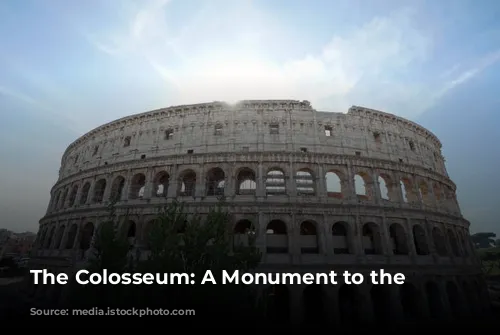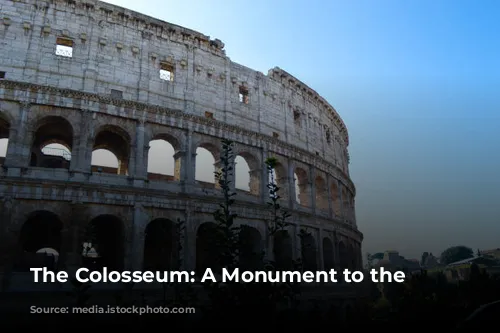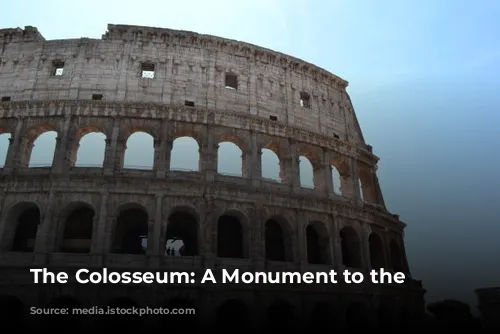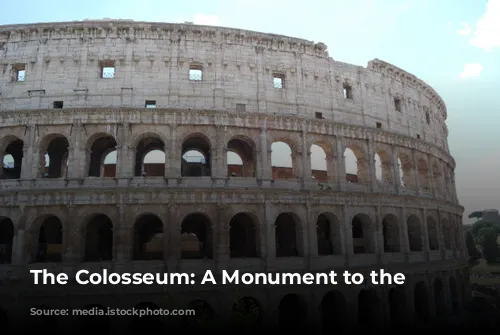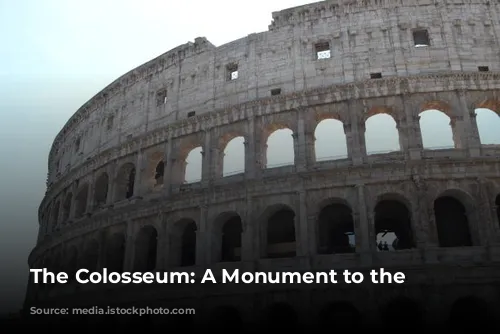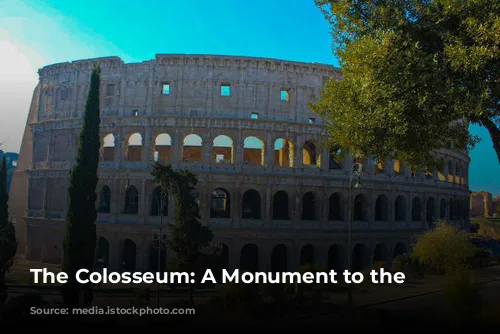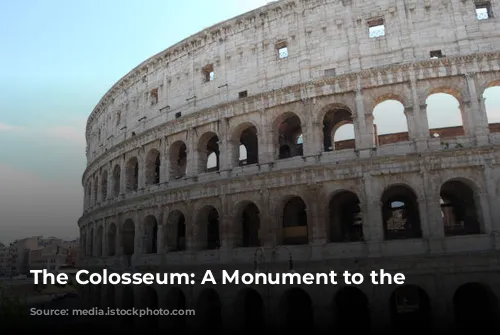The Flavian Amphitheatre, better known as the Colosseum, stands as a testament to the grandeur and might of the Roman Empire. It’s not only the largest amphitheatre in the Roman world but also a symbol of Rome’s enduring legacy. Emperor Vespasian, founder of the Flavian dynasty, began its construction, and his son Titus inaugurated it with a spectacular 100-day celebration in 80 AD.
A Grand Opening for a Grand Amphitheatre
The opening ceremony was an extravagant affair, featuring gladiatorial contests, elaborate shows, and even naumachiae – mock sea battles staged in the arena, filled with water. Imagine the awe of the crowds witnessing these spectacles! It’s reported that over 5,000 animals were slaughtered during the opening festivities.
The Colosseum: A Name With a Story
But why is it called the Colosseum? The name “Colosseum” first appears in the writings of the Venerable Bede, a medieval monk. He prophesied, “Rome will exist as long as the Colosseum does; when the Colosseum falls so will Rome; when Rome falls so will the world”. This name was likely inspired by the Colossus of Nero, a colossal statue of the emperor that once stood nearby.
A Masterpiece of Roman Engineering
The Colosseum is an architectural marvel. It was once entirely clad in glistening travertine stone, giving it a dazzling white appearance. The elliptical shape of the Colosseum allowed for maximum seating capacity. The amphitheatre had four levels, with the first three boasting 80 arches each. These arches were adorned with statues, enhancing the architectural splendor.
The Romans were renowned for their mastery of the arch, a structural element that enabled them to distribute weight efficiently. The Colosseum itself can be viewed as a series of aqueducts stacked one on top of the other, showcasing the Romans’ brilliant engineering skills.
Time’s Scars and the Colosseum’s Transformation
Over time, the Colosseum has suffered significant damage. Much of the outer brick wall has crumbled, leaving just a skeletal frame of its former glory. In the Middle Ages, the Colosseum was stripped for its valuable materials, serving as a quarry for the construction of prominent buildings like Barberini Palace and St. Peter’s Basilica.
A Place for Spectacle and Social Hierarchy
The Colosseum could accommodate up to 70,000 spectators. Seating was arranged according to social status, with the commoners occupying the upper tiers and the elite seated closer to the arena. The front row was reserved for senators, vestals, priests, and of course, the emperor.
The Sun Never Set on the Colosseum’s Entertainment
Like modern stadiums, the Colosseum was equipped with an innovative sunshade called the Velarium. This massive linen tarp was suspended by a system of ropes, winches, and wooden poles, requiring a team of 100 sailors from the Imperial fleet to maneuver it. The Velarium ensured that spectators could enjoy the spectacle without being scorched by the sun.
Behind the Scenes of the Colosseum’s Games
Entering the Colosseum, you would have been greeted by the arena, once paved with a mixture of brick and wood. Beneath the arena, a network of cellars housed equipment used for staging the games.
A sophisticated system of lifts and hoists, remnants of which can still be seen today, was used to bring animals and gladiators into the arena through trapdoors, creating dramatic entrances. These lifts could also hoist up backdrops for hunting events, adding to the theatricality of the shows.
From Animals to Gladiators: The Colosseum’s Entertainment
The Colosseum played host to a variety of shows, including venationes – fights between exotic animals or men and animals – and silvae, elaborate hunting simulations. These events served to connect the citizens with their leader while providing a much-needed distraction from political concerns.
One of the most popular events was the gladiatorial contests. After a midday break, gladiators would march into the arena, greeted by a roaring crowd and the sound of trumpets and drums. These gladiators, who often hailed from the Ludus Magnus, a gladiatorial training school, were treated like heroes.
The Gladiators: Warriors of the Arena
Gladiators, whose name derives from the gladius, a short sword used by Roman legionaries, were not always forced into battle. Many were prisoners of war given the choice of slavery or fighting in the arena for a limited period. Others were simply impoverished individuals seeking fame and fortune. The profession offered them a decent income, popularity, and even the attention of female admirers.
There were various types of gladiators, each with their own unique weaponry and fighting style. The retiarius, armed with a net, trident, and knife, was known for his agility. Others fought with shields, sickles, or even javelins and armor.
The fate of a defeated gladiator was decided by the emperor, who would signal whether to grant mercy or death with a gesture of his thumb. Victorious gladiators were rewarded with prizes and accolades.
The Colosseum: A Witness to the Dark Side of Roman Entertainment
The Colosseum was a stage for brutal spectacles that we find disturbing today. The smell of blood, burnt flesh, and wild animals permeated the air, even with attempts to mask it with incense and perfumes. The Romans’ taste for these shows can be compared to modern audiences’ fascination with “splatter” movies, with the key difference being the raw reality of the Colosseum’s events.
From Glory to Decay: The Colosseum’s Legacy
After the fall of the Roman Empire, the Colosseum fell into disuse and was gradually stripped of its materials. It served as a refuge for hermits, a cemetery, and even a quarry.
However, the Colosseum was ultimately saved from destruction. It was declared a sacred monument dedicated to the Passion of Christ by Pope Benedict XIV and has since become a revered site for Christians. The Colosseum’s grandeur and its history have captivated visitors for centuries, drawing millions to marvel at its timeless power.
For those who stand within its walls, the Colosseum offers a glimpse into the heart of ancient Rome, a reminder of its glorious past, and a monument to the enduring power of human civilization.
